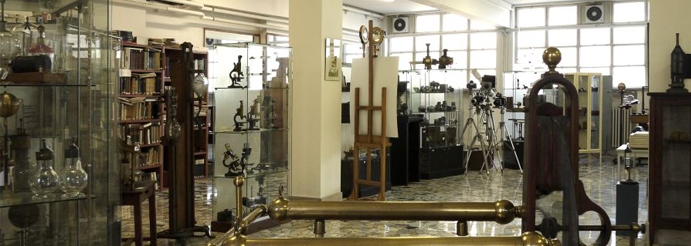More than 3,000 square meters in the ex tobacco factory house dozens and dozens of specimens from the scientific and didatic history of the University.

No time limit is imposed on the collected material: there are some items from the end of the 18th century, many objects from the 19th century but special attention has been paid to the instruments of the 20th century, which have a greater risk of being lost as they are considered “old things”, without importance.
The philosophy of ASTUT is to create “a museum of the present for future memory”: objects that have only just been discarded are collected in our store rooms because after a few dozen years they also will be key pieces in scientific and technological evolution. In addition vintage photographs and film showing scientific instruments in use in their original workplace are of particular interest.
It is with great pleasure that we draw attention to the donations of private citizens who consider the Archive to be the ideal place in which to deposit objects and instruments that tell the story of fragments of the working life of a member of their families. Some important companies have also deposited material that attests to their activities significantly. In some cases our collaboration has been requested outside the University to verify, catalog and re-order historical and scientific collections.
We have played an active part in producing about thirty themed exhibitions, paying particular attention to the display of the instruments, reconstructing situations similar to the ones in which they were found while in use. If it is possible, the devices are accompanied by films, created by us, that demonstrate their function or show scientists using the devices: this is much more effective than an explanatory panel for communicating with the public. These films are available on our youtube channel.
We participate in conferences on the history of scientific instruments at an international level, making original contributions of research and take part in events linked to the diffusion of scientific information such as “La Notte dei Ricercatore” (The researchers’ night), “La Settemana della Scienza” (Science week), “Porte Aperte” (Open doors) for school groups and other different types of groups, organizing events in collaboration with local cultural authorities.
